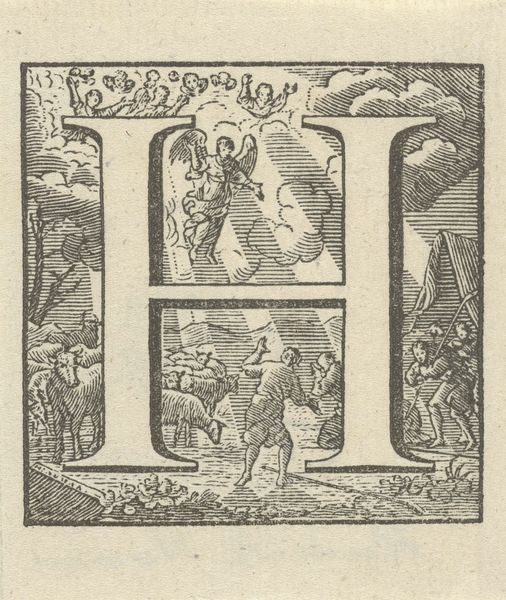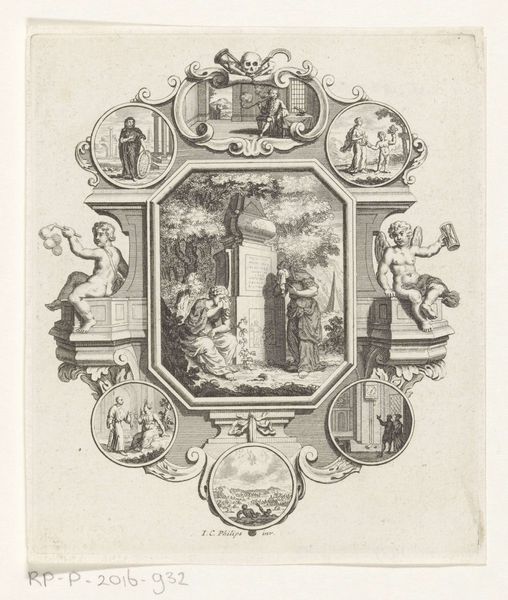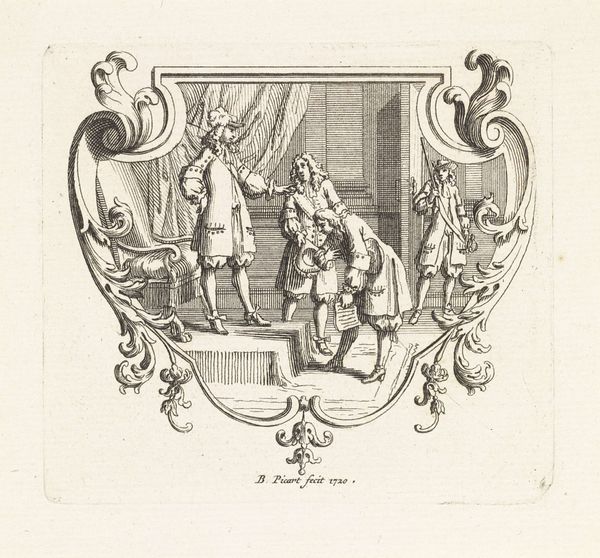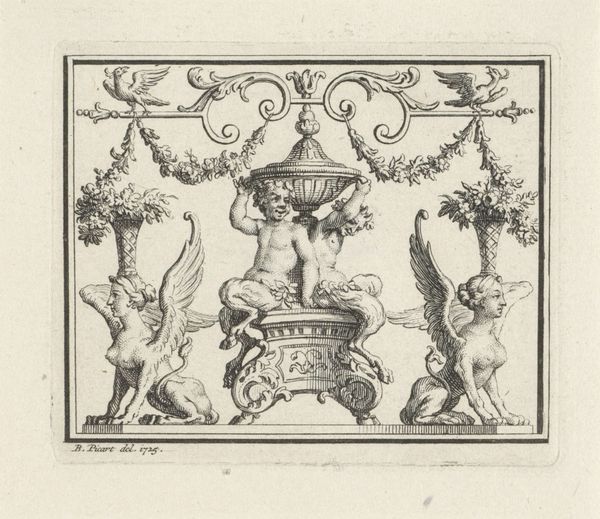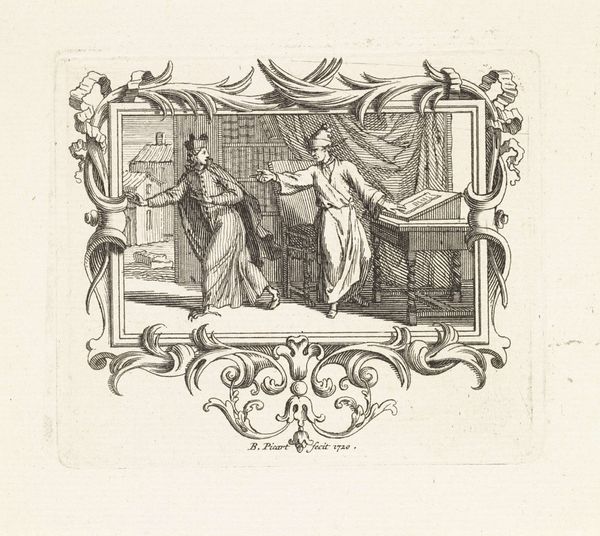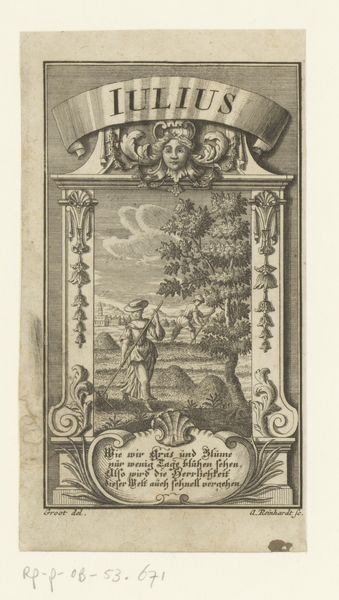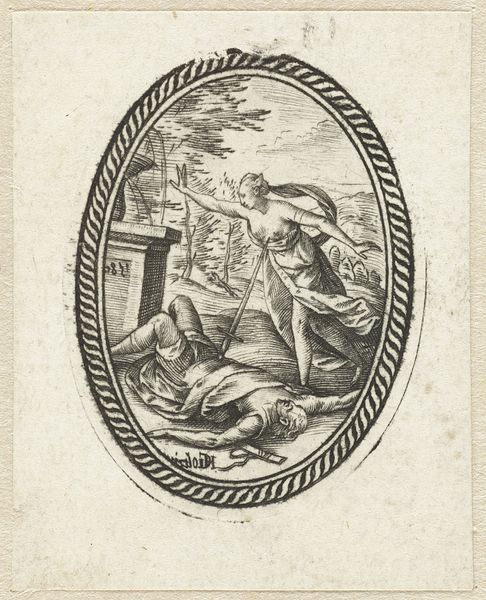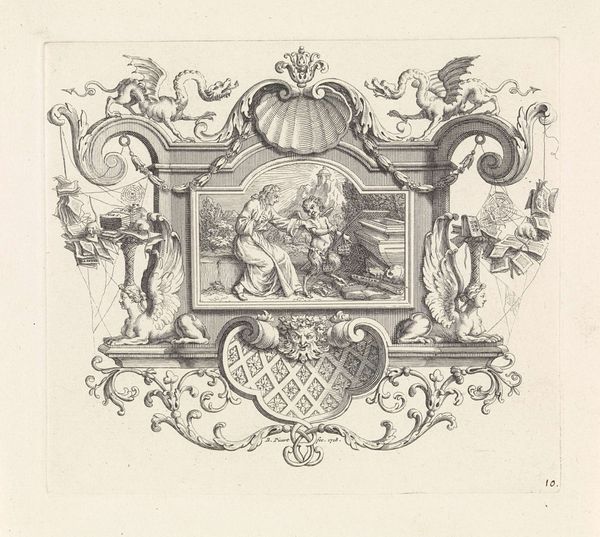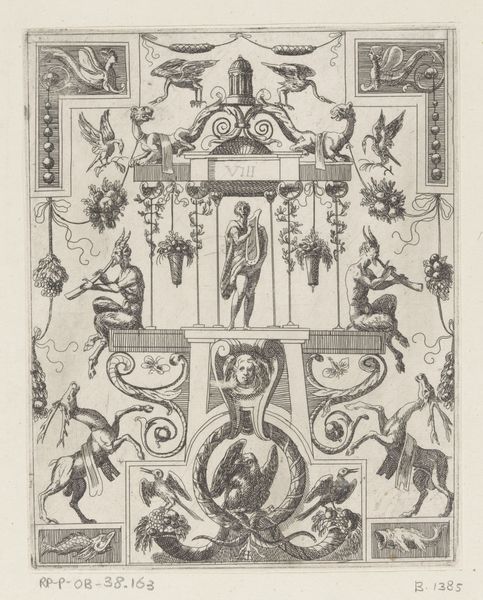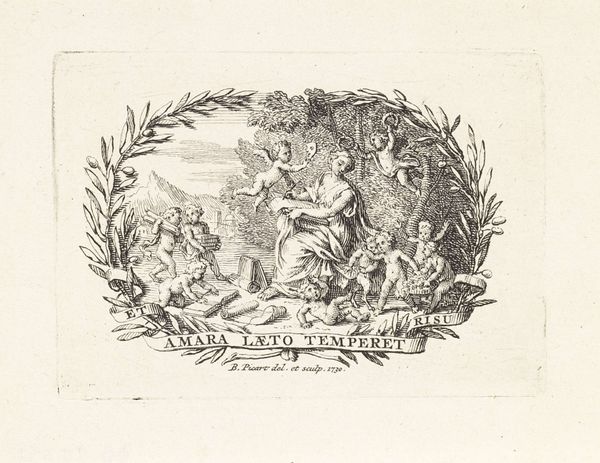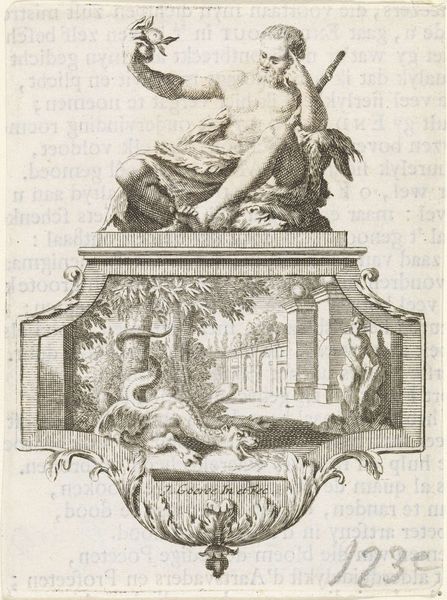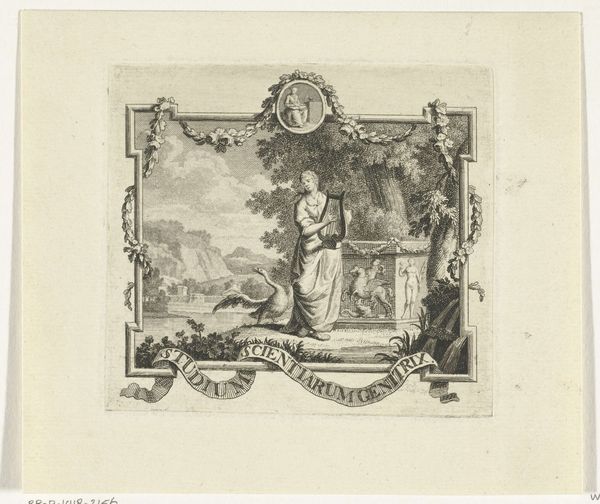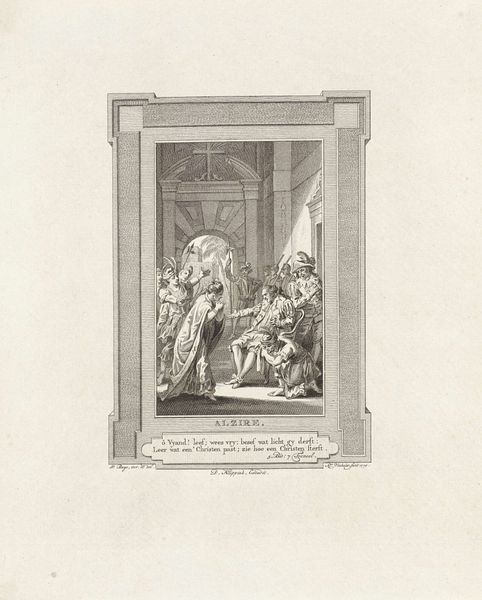
engraving
#
allegory
#
baroque
#
figuration
#
line
#
history-painting
#
engraving
Dimensions: height 70 mm, width 72 mm
Copyright: Rijks Museum: Open Domain
Curator: Today we’re looking at “Veldheer gepresenteerd aan Eer,” or “Commander Presented to Honor,” an engraving by Bernard Picart, dating from 1720. It’s part of the Rijksmuseum’s collection. My immediate impression is of formality and calculated symbolism. The crisp lines and precise details feel very deliberate. Editor: Yes, there is a kind of chilly grandeur here. To me it feels less like an observation and more like propaganda, attempting to legitimize power through visual rhetoric and what look like inherited rights. Curator: Observe how Picart has structured the composition. The warrior on the left is moving towards the figure of Honor, seated on the right. Above them, a winged figure gestures towards the warrior, completing a dynamic triangle of gazes and movements. The precision of the engraving medium reinforces the clarity of the message. Note also the symbolism within this framework. Editor: Precisely! This warrior is not just being honored for battlefield exploits. The symbolism suggests that the honor being bestowed is actually part of a tradition: the genealogy indicated by that…tree is connected to family honor. So, valor is inextricably linked with notions of birthright and social status, isn't it? Curator: Well, the coats of arms definitely suggest lineage. But, equally important to consider are formal choices: the artist employs distinct textures to differentiate between the figures – the roughness of the battlefield is a stark contrast with the flowing drapery of Honor. Editor: Good point. What's striking is how "Honor" herself seems less celebratory and more an indifferent, detached figure, even… judgmental. It almost reveals the constructed nature of concepts like valor and reward, how they might be instruments wielded by those in power. Also note, the battlefield in the background looks populated with mindless subjects. Curator: Perhaps the engraving prompts a reflection on these power dynamics. The clean, decisive lines of the engraving speak of the Age of Reason, of attempts to systematize and classify the world according to a hierarchical framework. The sharp contrast seems essential to the image. Editor: Ultimately, by unpacking these allegorical symbols and understanding the artwork in the context of 18th-century political landscapes, we see an example of the intersections of war, family tradition, and social hierarchy… all of which served the dominant elites. Curator: I appreciate the artwork's rigorous execution and its testament to a bygone era’s understanding of honor and leadership. Editor: And I find it valuable as a stark reminder that narratives of power, even those couched in virtuous terms, are worthy of our critical scrutiny.
Comments
No comments
Be the first to comment and join the conversation on the ultimate creative platform.
